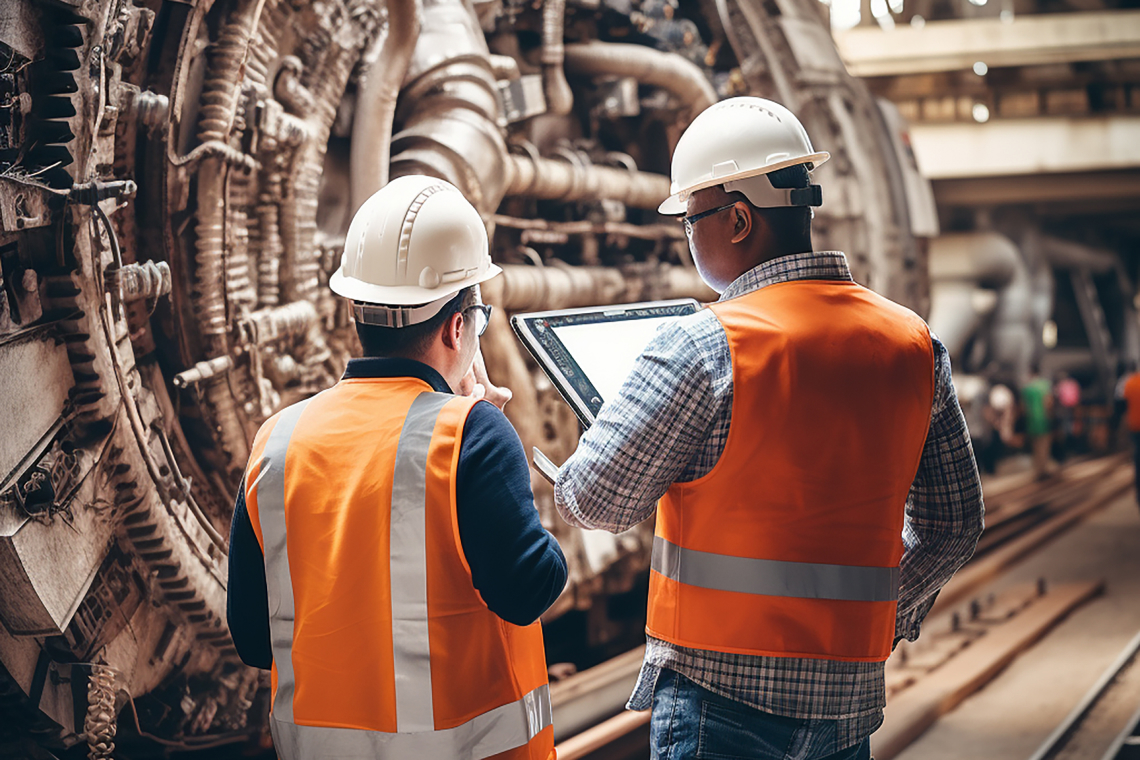Industrial robots are high-tech and intelligent machines that can perform algorithm-based, routine and repetitive tasks in factories and similar industrial production environments without the need for human power and contribution. These robots are designed with six or more axis arms, integrated with different grippers, tools and sensors to perform precise and dynamic movements.
Robot automation systems are automation systems with central control and software infrastructure that enable industrial robots to work in integration and synchronization with each other and production equipment. Thanks to these systems, industrial robots work efficiently, quickly and precisely on production lines and processes such as performance monitoring and reporting are performed.
Industrial robots and robot automation systems are indispensable parts of modern industrial production processes. Especially in sectors related to different fields such as automotive, electronics, metal processing, plastics and chemistry, industrial robots and robot automation systems are widely used.
It is predicted that robot automation systems will become even more intelligent and flexible in the future with the Industry 4.0 revolution and will take the digitalization and optimization of industrial production processes to a new level. Industrial robots, which will work in integration with technologies such as the Internet of Things (IoT), artificial intelligence and machine learning, will become one of the lifeblood of the industrial production sector by improving their ability to make decisions on their own, correct their errors and adapt to changing conditions.
By applying to the robot solutions we offer as Nilus Engineering, you can combine your industrial production processes with the technology of the future and reduce your costs to the maximum extent while bringing your productivity and production to the standard of tomorrow.
What is a Robot System?
All of the hardware and software components that allow industrial robots to work in a way that brings high efficiency in production processes are called robot systems. Robot systems basically consist of a robot arm, controller, sensor, actuator (motor, hydraulic, piston, etc. parts), power supply, end sets (gripper, robot arm, etc.) and a user interface. Thanks to these components, industrial robots can be utilized in production processes
Robot arms, which are components of industrial robots, are mechanical structures that allow these robots to perform the physical movements specified in industrial production processes. Controllers, on the other hand, serve as the brain of industrial robots, helping them to run robot programs and perform their tasks in synchronization with different components working in robot automation systems.
Sensors, another component of robot systems, enable industrial robots to receive feedback by sensing their environment. Thanks to this feedback, robotic systems can prevent errors that can cause work accidents and achieve a much more flawless production process with repetitive learning.
All components aside, the main factor that paves the way for robot systems to fulfill the tasks expected of them is robot programming. Industrial robots are usually programmed through special programming languages such as C++, Python and Java and equipped with a graphical user interface. Professional programmers who perform robot programming write code that defines the robots’ movements, speeds, sensitivities and different related parameters. They also process data from sensors, allowing robots to adapt to the environment and avoid problems.
The field that brings together all the components of robot systems is the multidisciplinary engineering field called robotics. Robotics encompasses fields such as mechanical, electrical-electronic, control, computer and software engineering. Robotics experts develop innovative robot technologies in many fields such as industrial automation, medicine, space exploration, defense, logistics and service sector.
What are the Features of Industrial Robots?
Industrial robots, which are indispensable components of robot automation systems, are an indispensable part of production processes. Industrial robots have different features such as flexible and versatile operation, speed, precision and durability. Below, these features of industrial robots, which are components of robot systems, are discussed in detail.
Flexibility and Versatility
Industrial robots are extremely flexible and versatile. They can be programmed to perform different tasks and seamlessly adapt to different production systems and production lines. Thanks to robot programming, it is even possible to customize the movements and functions of robots according to needs.
High Speed and Precision
Industrial robots operate at high speed and precision. Unlike humans, they can work tirelessly and around the clock, performing routine operations with flawless accuracy. And thus maximize productivity and product quality.
Superior Durability
One of the most important features of industrial robots is that they can work in environments with high or low temperatures that can be dangerous for humans. Industrial robots can lift heavy loads and withstand harsh environmental conditions. In addition, with low maintenance requirements, they can work for many years without any problems.
What are the Types of Robots?
Robots, which are the basic building blocks of robot automation systems used in many different fields from industrial production to agriculture and service sector, can be examined in six different groups: Cartesian robots, scara robots, delta robots, articulated robots, mobile robots and collaborative robots with their differences according to their capabilities, usage areas and structures.
Cartesian Robots
Cartesian robots move along three linear axes. With their simple structure and high degree of precision, they provide great advantages in processes such as assembly, packaging and material handling. Moreover, they are relatively easy to program in terms of robot programming.
Scara Robots
Scara robots (Selective Compliance Assembly Robot Arm) are three-axis robots, just like Cartesian robots. They can perform their tasks extremely quickly and precisely in the horizontal plane.
Scara robots are especially used in areas such as screw insertion, soldering and part placement. The compact design of Scara robots makes them ideal for use in confined spaces. The main difference of Scara robots from Cartesian robots is that they are not as precise as Cartesian robots.
Articulated Robots
Articulated robots, which attract attention with their human arm-like structures, are generally referred to as robots with six or more axes. The high number of arms gives them high flexibility and mobility. With these features, they can be used in many different areas from welding to painting, assembly to palletizing. In addition, articulated robots can be programmed to perform different tasks with robot programming.
Delta Robots
Delta robots are specially designed for applications requiring high speed. Thanks to their parallel kinematic structure, they are capable of moving light loads quickly. Widely used in the food, pharmaceutical and electronics industries, delta robots also offer superior performance in packaging, sorting and assembly processes.
Mobile Robots
Mobile robots are autonomous robots that can move with the help of wheels. Frequently used in areas such as transportation, exploration, security and customer service, mobile robots can perform dynamic operations by following pre-programmed routes with their navigation capabilities and environmental sensors.
Collaborative Robots
Collaborative robots, also called cobots or collaborative robots, are robots specially designed to work safely side by side with humans. They stand out with their lightweight and compact structure, advanced safety features and ease of use. These robots can work in collaboration with humans in processes such as assembly, packaging, quality control and light material handling.
Productivity Increase
Robot automation systems significantly increase productivity by speeding up production processes and eliminating human errors. Robots have the ability to work 24/7 without getting tired. This allows for increased production capacity and shorter delivery times. In addition, thanks to robot automation systems, workflow can be optimized and bottlenecks can be eliminated.
Cost Savings
Industrial robots provide significant cost savings to businesses in the long run. Although the initial investment cost is high, robots reduce labor costs as they can work continuously with almost no errors. Energy consumption and maintenance costs are also lower compared to traditional production methods. All these factors reduce the total cost of robot automation systems.
Quality and Consistency
Robot automation systems are highly effective in improving the quality and consistency of manufactured products. Robots can make precise and repeatable movements as programmed. This minimizes the error rate and improves product quality. It eliminates inconsistencies caused by the human factor and increases customer satisfaction.
Flexibility and Scalability
Industrial robots have the flexibility to adapt quickly to changing market demands. They can be easily reprogrammed for different products and production lines can be changed quickly. With this flexibility, businesses can respond faster to customer needs and gain a competitive advantage. In addition, robot automation systems are easily scalable. Adding new robots to increase production capacity is much faster and easier than training and integrating workers.
Work Safety
Robot automation systems increase occupational safety by taking on tasks that are dangerous and risky for humans. Risky tasks such as heavy lifting, working with chemicals or exposure to high temperatures are transferred to robots, protecting workers’ health and safety. In addition, robots can work tirelessly, preventing accidents caused by human error.






